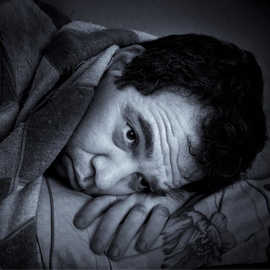Sleep Disorders
 A sleep disorder is a disturbance to traditional sleeping patterns, often as a result of health concerns like obesity. Sleep disorders may prevent you from falling asleep at a reasonable hour, disrupt sleep by causing you to wake in the night or leave you feeling excessively tired throughout the day.
A sleep disorder is a disturbance to traditional sleeping patterns, often as a result of health concerns like obesity. Sleep disorders may prevent you from falling asleep at a reasonable hour, disrupt sleep by causing you to wake in the night or leave you feeling excessively tired throughout the day.
There are two sleep disorders especially associated with obesity:
- Obstructive sleep apnea (OSA)
- Obesity hypoventilation disorder (OHS)
Obesity and Sleep Disorders
Being obese or overweight significantly increases your risk of developing a sleep disorder. About 77 percent of overweight adults have a sleep disorder.
Most adults requires between seven and nine hours of sleep every night. Those who sleep fewer than six hours per night are more likely to experience weight gain as a result of hormone imbalance and insufficient insulin production. A lack of sleep can further affect your diet and exercise habits as you lose weight.
Obstructive Sleep Apnea (OSA)
This disease, which is characterized in part by heavy snoring, causes sufferers to periodically stop breathing in their sleep. When the tissues in the neck become too bulky, space for airflow is compromised. When you enter the deep phase of sleep, your muscles relax, causing the tongue to fall backward and obstruct the already reduced space. At this point, your breathing stops, and the lack of oxygen eventually signals your brain to wake you up. Episodes of sleep apnea can occur up to 100 times in one night.
Breathing often returns with a loud snort or choking sound that may wake one’s partner. Most people who have obstructive sleep apnea are prone to excessive heavy snoring, though not all instances of snoring are associated with the disorder. Obesity is the leading risk factor for obstructive sleep apnea.
Symptoms of sleep apnea include:
- Daytime fatigue
- Excessive snoring
- Further weight gain
- Headaches, especially in the morning
- Mood changes and irritability
Someone with obstructive sleep apnea may not realize they are waking during the night, or that their breathing ceases, though a partner might. Obstructive sleep apnea is diagnosed based on family history, a physical examination and sleep studies.
Obesity Hypoventilation Disorder (OHD)
Obesity hypoventilation disorder develops when the abdomen presses up against the diaphragm, resulting in shortness of breath. This can cause carbon dioxide to build in the bloodstream, which may result in heart failure if left untreated. This condition exclusively affects obese populations as it develops when the abdomen is enlarged. Obesity hypoventilation disorder will commonly develop in conjunction with obstructive sleep apnea.
Obesity hypoventilation disorder may be diagnosed during a physical examination or sleep study. Many of the symptoms are similar to those of sleep apnea, and include:
- Daytime sleepiness
- Headaches, especially in the morning
- Memory lapses
- Difficulty learning
- Irritability
- Severe mood changes, including anxiety and depression
Treatment for Sleep Disorders
Sleep disorders like sleep apnea and obesity hypoventilation disorder are often treated with specialized devices, including:
- Positive airway pressure, including continuous positive airway pressure (CPAP) and Bi-level positive airway pressure devices (BiPAP). These devices are used during sleep, providing mild air pressure to keep airways open. The machine is fitted with a plastic mask that sits over one’s face and is connected to the machine with a tube.
- Ventilator support. When severe, obesity hypoventilation disorder may require ventilator support, which is provided in a hospital setting. A ventilator uses a breathing tube to provide the lungs with oxygen.
Medications are sometimes used to promote better sleep, but are not encouraged for long-term use. Losing weight may also encourage better sleep. For this reason, LAP-BAND surgery is often considered a useful tool for improving sleep quality.